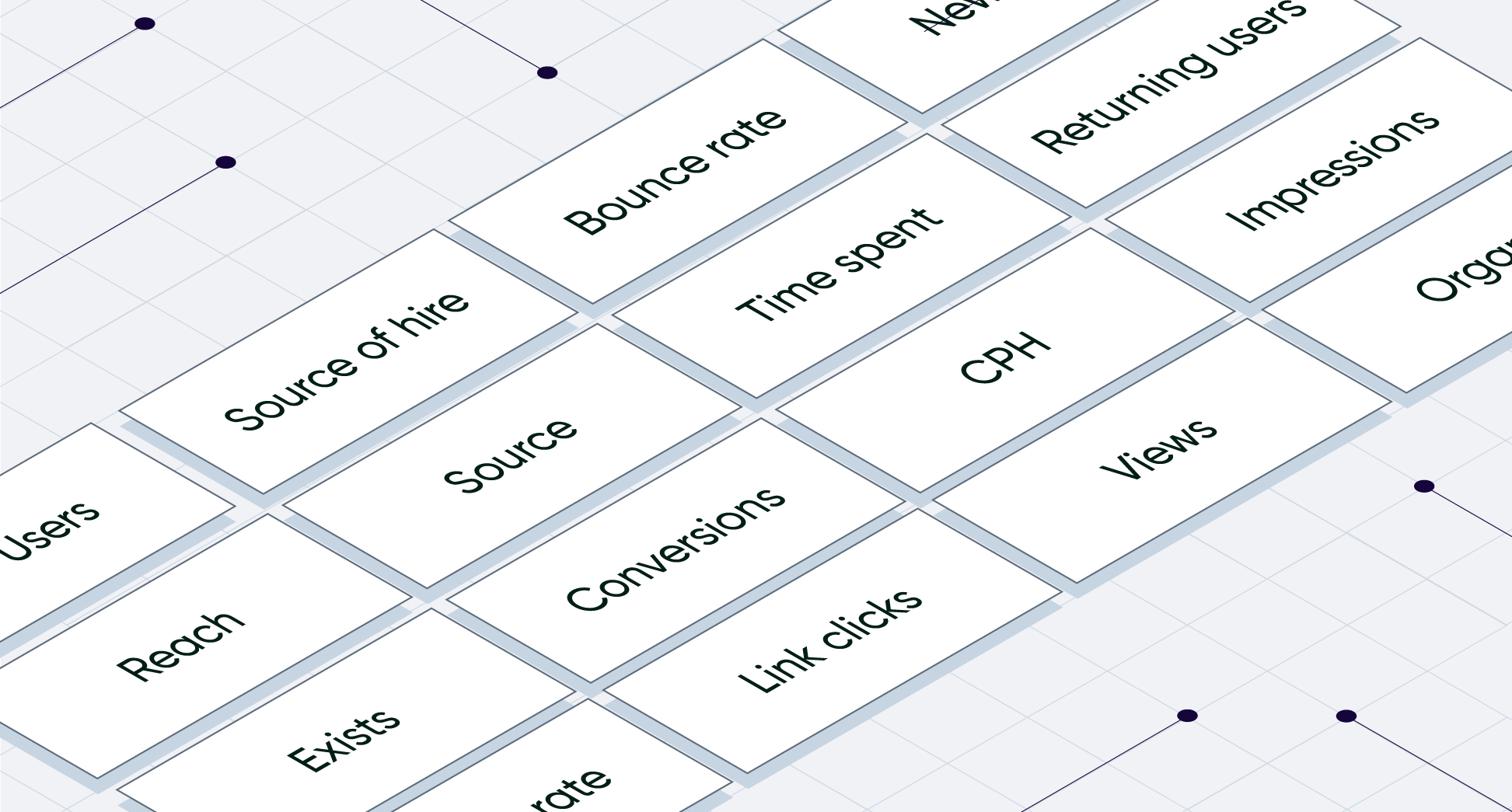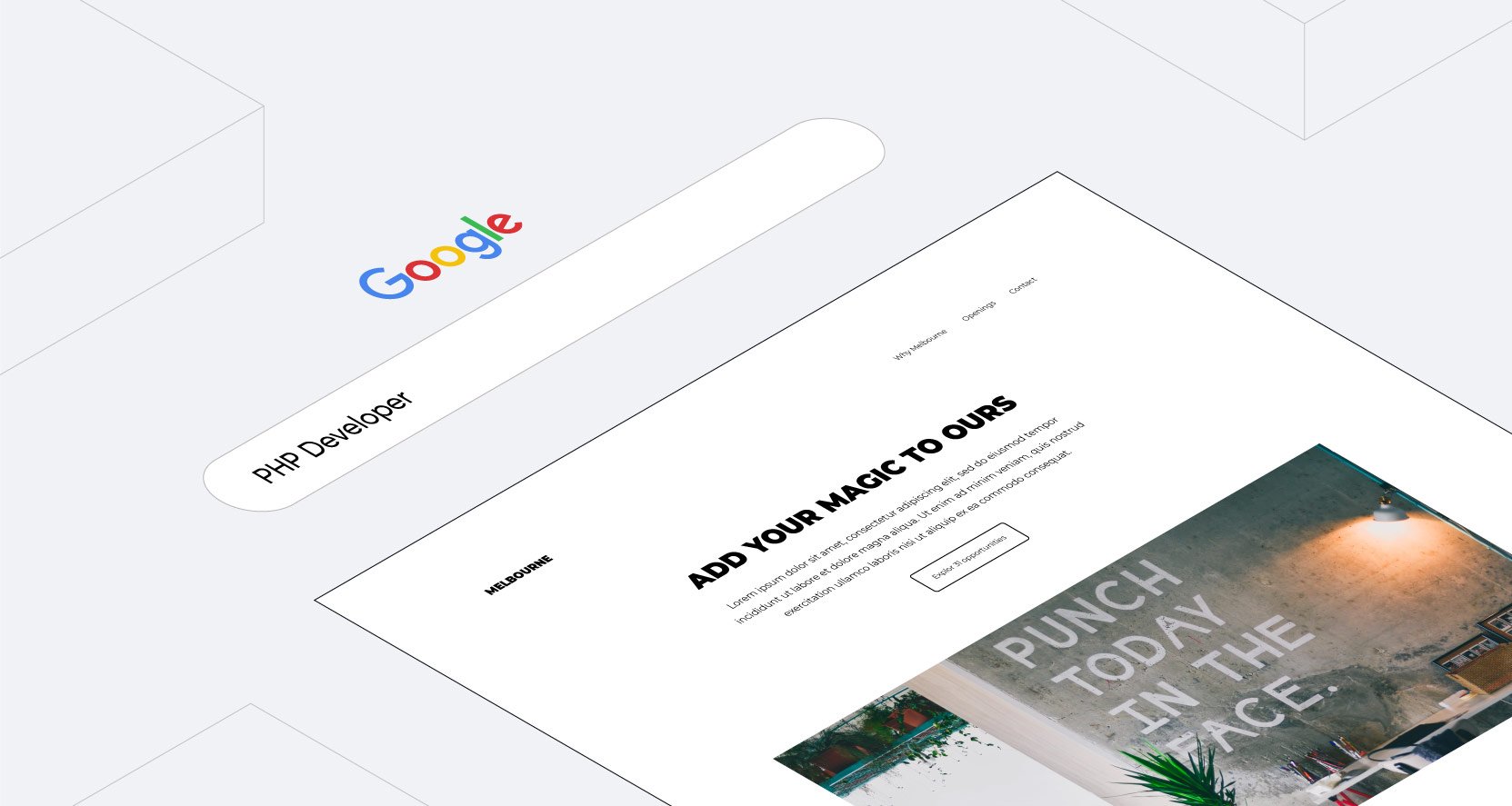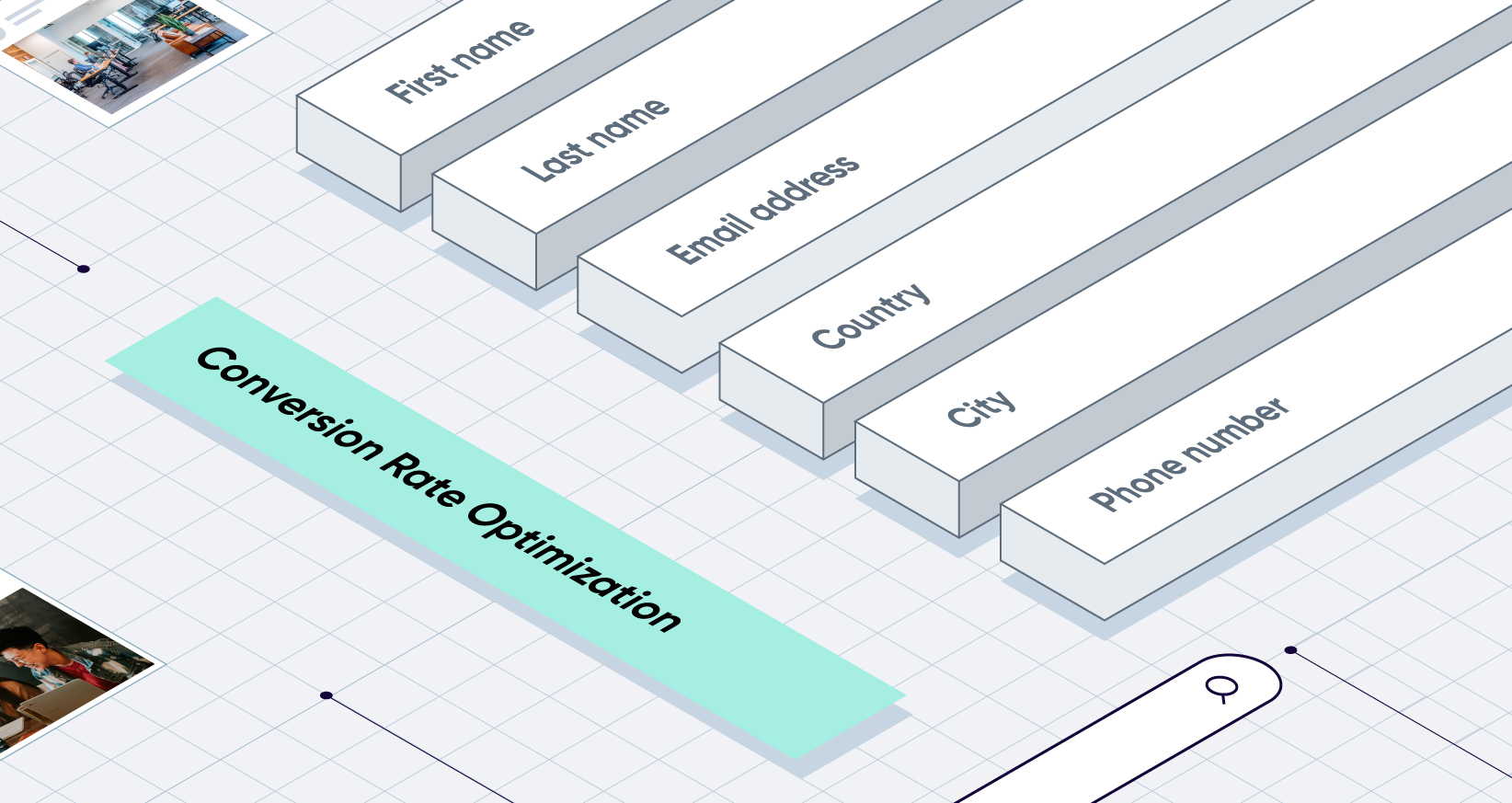We said it multiple times, and we'll say it again: your career page should be the number one source for hiring. However, for most companies, the career page is at the lower end of hiring sources, with job boards and recruitment agencies at the top of the list.
What differentiates those with a high number of hires from the career page and companies dependent on third-party vendors? From our experience, it is the data-driven mindset.
Data-driven has many meanings in talent acquisition, so before diving into the metrics, let's define what makes a talent acquisition team "data-driven." Let's say we have company A that tracks the hiring metrics in the ATS, such as cost per hire, source of hire, and time to fill. Then we have company B, which, on top of the ATS metrics, tracks data from the top of the funnel from the social media platforms and other channels. Company B is more data-driven than company A, but can we call it a "data-driven company"? From our point of view, company B is missing a massive piece of the data puzzle: Google Analytics for career pages. Data-driven requires tracking the entire candidate journey, no exception.
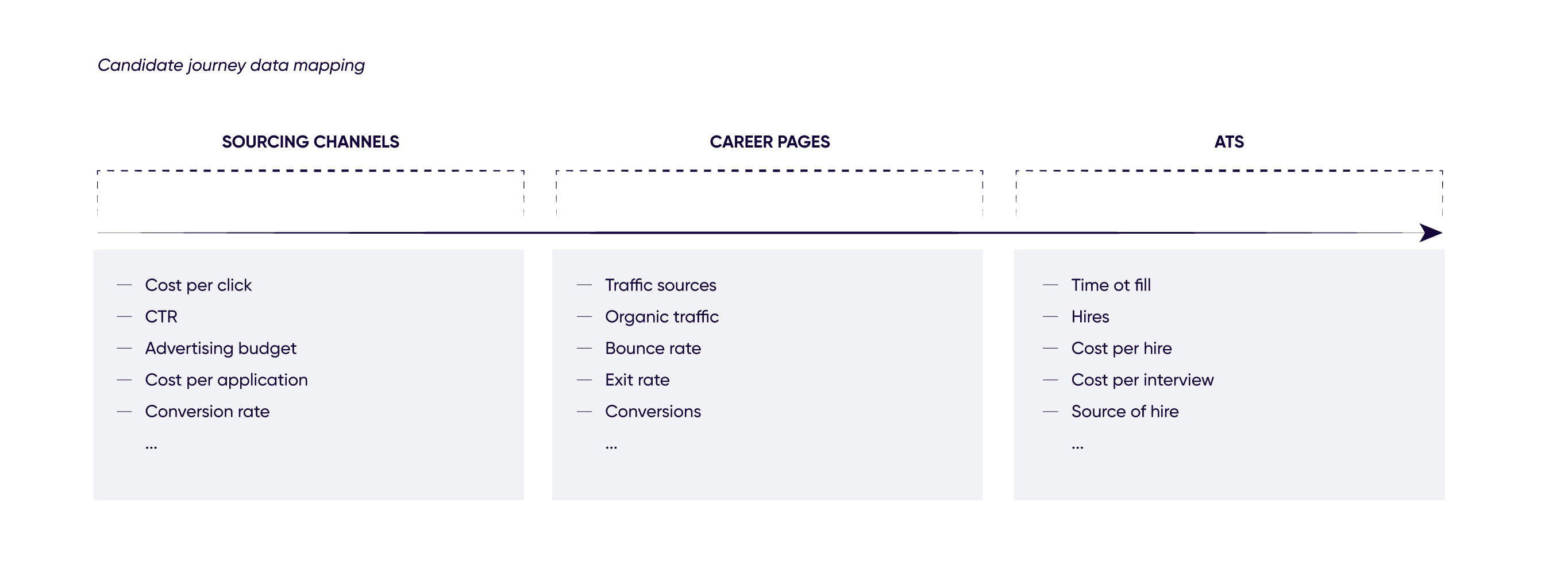
Now that we defined what makes a talent acquisition team data-driven, let's look at the top 5 metrics for career pages.
Source of traffic
Google or Adobe Analytics offers a sophisticated sources map (channels that generate traffic on your career page). Understanding the avenues candidates take to reach your career page is critical for optimizing your sourcing ecosystem. For example, the more traffic you generate from organic, the better. Organic traffic is an indicator of your employer branding gravity power.
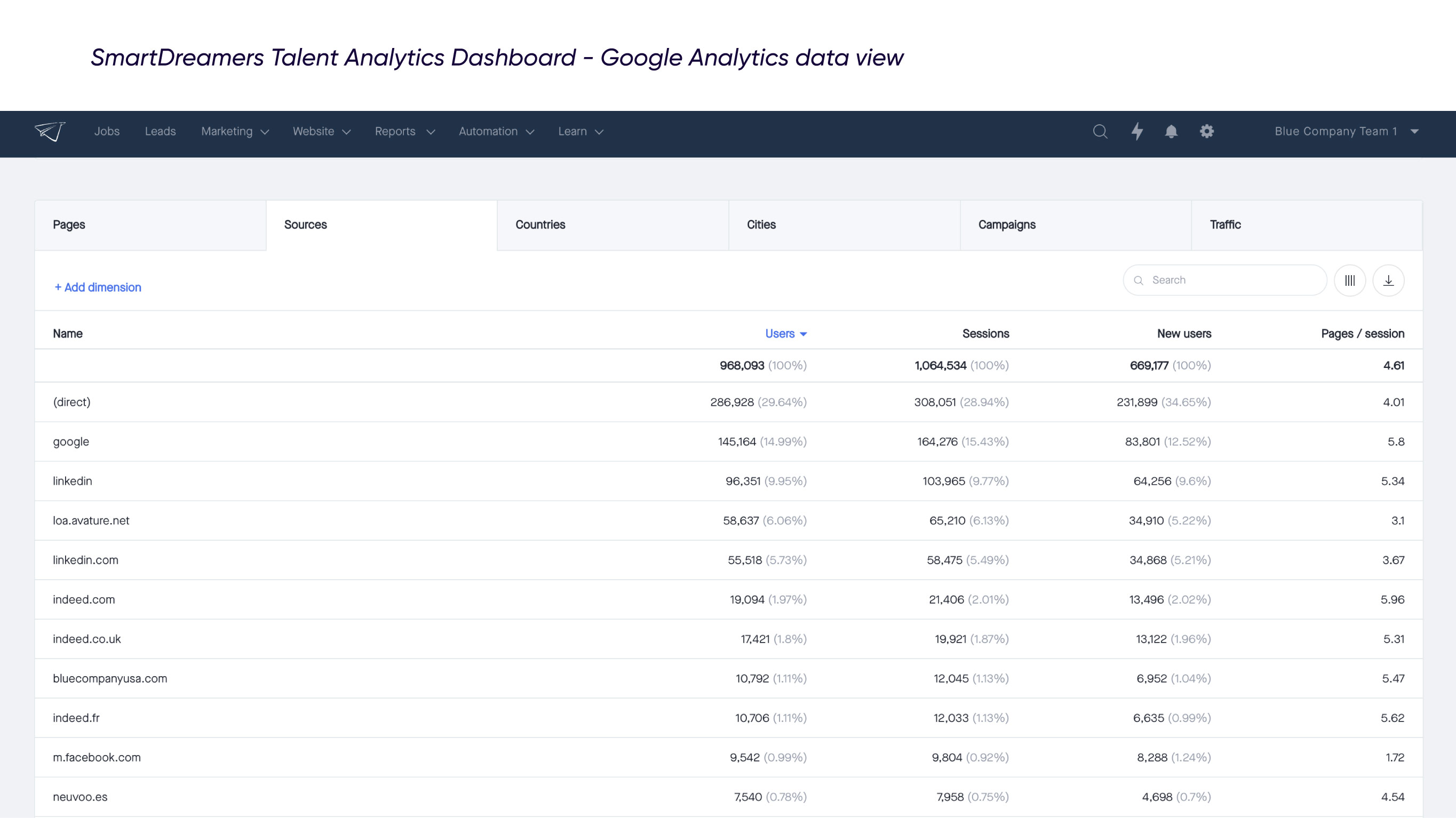
Bounce rate
The bounce rate indicates how many people have visited a specific page but have not made any other actions on the page (actions that are tracked in Google Analytics). We use as a benchmark a bounce rate of 35%. If, for example, your career homepage has a 50% bounce rate, it should trigger an in-depth analysis to discover the reasons behind the high bounce rate.
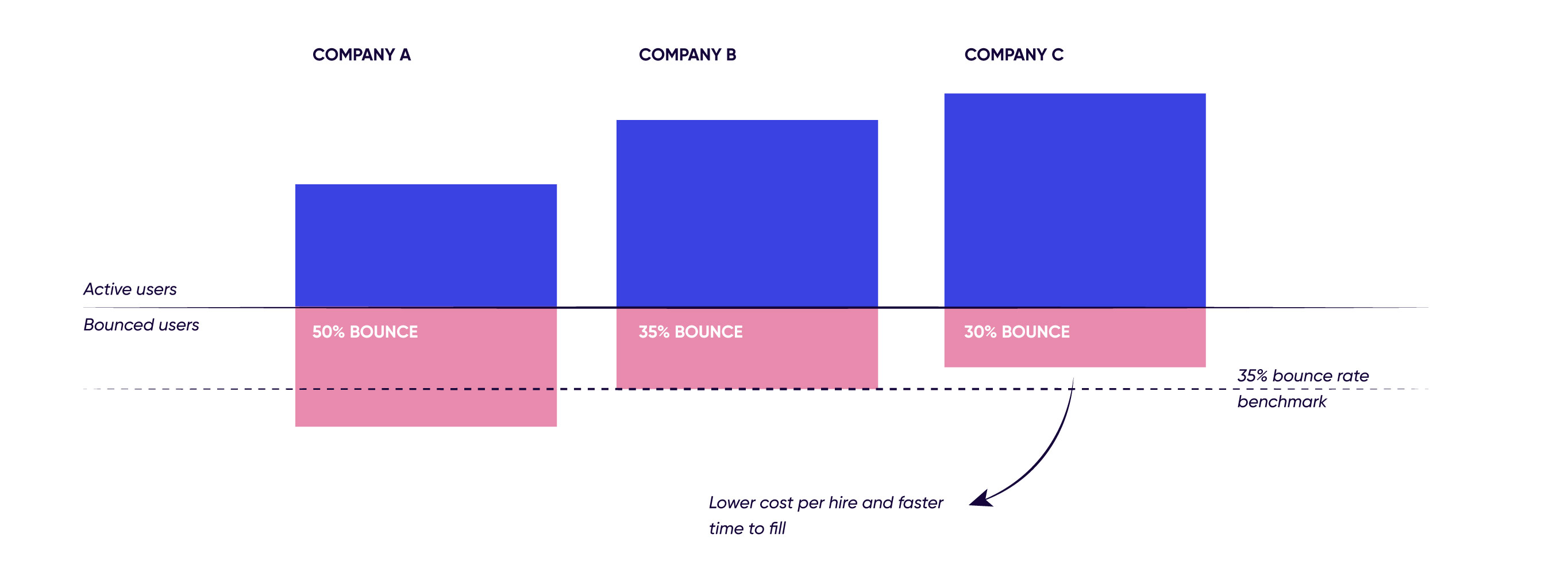
It's important to remember that pages at the start of the candidate's journey (e.g., career website homepage) tend to have a lower bounce rate than pages that are down the journey (e.g., job description page).
Exit rate
Unlike the bounce rate, the exit rate refers to users who have visited other pages but have left a specific page. Analyzing both bounce rate and exit rate offers better clarity for the performance of a page.
In some cases, a high bounce rate is something that you don't have to worry about. For example, the Thank You page has a high exit rate because it's most likely the last touch point for the candidate; on the other hand, the job listing page should have a low exit rate as users should take action to search for jobs.
Forms drop-off
Complicated application forms tend to lower the conversion rate. For example, if a user interacts with your website from a mobile (most do so) and starts the application process, and if uploading a CV is a mandatory field, the user will drop off.
A high drop-off rate can have a significant negative impact on your budget. Let's take as an example 100,000 submissions per year (started) with CAC (cost of acquisition) of 10 USD per user; if the drop-off rate is 35%, you lose 35,000 applications and 350,000 USD from your budget.
Organic traffic
Organic traffic is one of the best metrics to track the health of your employer brand gravity. Many marketing actions don't have a direct attribution tracking model (e.g., outdoor advertising), so you want to look at other metrics that those actions might influence. In all cases, the higher the organic traffic, the better your talent acquisition ecosystem. Companies with low organic traffic depend more on third-party recruitment solutions such as job boards and recruitment agencies.
It is important to note that if your company has a strong brand, that does not translate proportionally to your employer brand. Candidates need to know that you are an active employer in the market; as such, you need to reach people across the web with meaningful content.
Transforming into an organization centered on candidates requires a deep dive into user behaviors and desires. Progress hinges on the collection and analysis of robust data across the candidate's journey, pinpointing precisely where and how to enhance each phase.
Learn more about SmartDreamers Talent Analytics and how we help global companies track the entire candidate journey in a unified platform.





